Click here to print
When Women Made the Movies
posted January 12, 2013
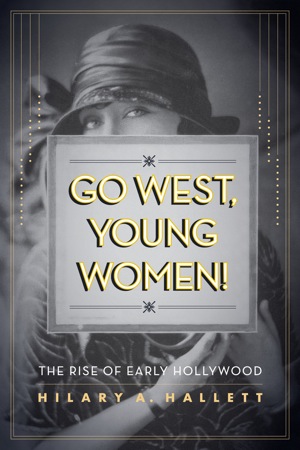 In her book just out (January 2013) from the University of California Press, Go West, Young Women: The Rise of Early Hollywood, Hilary Hallett explains how, thanks to immigrants seeking out futures and fortunes, Los Angeles became a burgeoning film city – and, in 1920, the only western city where women outnumbered men. Hallett, a Columbia University historian, explores the under-examined phenomenon of the “New Woman of the West” and her role in the development of film before and during the blossoming of Hollywood.
In her book just out (January 2013) from the University of California Press, Go West, Young Women: The Rise of Early Hollywood, Hilary Hallett explains how, thanks to immigrants seeking out futures and fortunes, Los Angeles became a burgeoning film city – and, in 1920, the only western city where women outnumbered men. Hallett, a Columbia University historian, explores the under-examined phenomenon of the “New Woman of the West” and her role in the development of film before and during the blossoming of Hollywood.
Hallett writes that, early in Hollywood’s history, its publicity promoted L.A. as a ‘New West’ that fostered the careers, and lives, of feminist pioneers. Publicity about female celebrities focused on their independence, resourcefulness, and success in an increasingly bohemian Los Angeles.
That phenomenon and its relevance to the history of feminism have been too little studied, Hallett contends. L.A. pitched itself as an urban oasis for single white women with aspirations of rapid advancement. That drew tens of thousands of women to the West to work in movies.
She explains the roles women played as directors, producers, actors, and support staff as the film industry evolved – and in some ways, devolved – from a marginal, decentralized business controlled by wealthy Anglo-Americans into the dominant, cosmopolitan industry of early Hollywood centered in Los Angeles.
Hollywood came to represent a different kind of frontier, one that spoke to a country torn between Victorian rectitude and individual emancipation, dreams of upward mobility and fears of moral dissolution. From Mary Pickford’s rise to become perhaps the most powerful woman of her age, to the racist moral panics of the anti-war years and the aftermath of Hollywood’s first sex scandal, Hallett describes how the path through early Hollywood presaged the struggles over modern gender roles that animated the century to come.
She told Moving Image Archive News about her preparation of the book.
In general terms, what was your experience in searching for material in archives and the like?
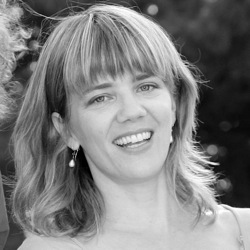 There is more accessible today on early Hollywood than ever before. That’s a combination of both the increased materials that are available at places like the Margaret Herrick Library in L.A. They’ve received more funding in recent decades, and they’ve taken their scholarly mission more seriously. Even over the time of my working there, you could see that changing. I did a lot of work there, and that was very satisfying.
There is more accessible today on early Hollywood than ever before. That’s a combination of both the increased materials that are available at places like the Margaret Herrick Library in L.A. They’ve received more funding in recent decades, and they’ve taken their scholarly mission more seriously. Even over the time of my working there, you could see that changing. I did a lot of work there, and that was very satisfying.
There are also the new electronic databases like FIAF [a group of databases from the International Federation of Film Archives] have made it much easier to find films even if they exist only in fragments, and even when films aren’t available, to do the archival work of just figuring out how many films an actress was in, and what kinds of films she was in. It has made that whole process far more complete. It’s not totally complete, of course, but it’s far more complete and it’s far easier to do than it was a generation ago.
So, we’re in a position now where we don’t have to make generalizations quite so much. Obviously most silent films are gone – that’s just the fact of the matter. But we are increasingly in a position where we don’t have to rely on just a very few pieces of evidence to speak for everything.
How many films were you able to watch, and did you have to do that at the libraries?
As I went along more and more stuff became available on DVD. My book is as interested in film culture as in silent film. This is why the Margaret Herrick Library and the New York Library’s Library of the Performing Arts were essential to me, because at places like that I was using a lot of scrapbooks. That was a practice that started on the Victorian stage. There was a variety of kinds of scrapbooks, but the kind I was mostly using were ones where a writer or an actor or a director would pay somebody at a professional service to cut out all of the press about you that was published nationally, and paste it into a scrapbook.
The scrapbooks provide a really amazing window onto what the press had to say about particular films, personalities, and subjects. Even though more newspapers are available now through archival means or microfilm, the scrapbooks provide everything from the big papers that everybody would look at, to little papers that you would never find any more. So you can really start to get a much more complete idea of how a subject was talked about.
Especially in the first half of my book, when I was trying to understand the way that these early performers in the industry were imagined, those sources were really great to get at that.
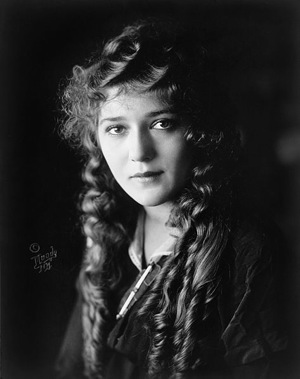
What’s on DVD is still very D.W. Griffith-heavy, but increasingly there is more material. For example, many of the Gloria Swanson films I write about, which in the beginning of my research for my dissertation I could see only if I went to the Library of Congress, are now available on DVD.
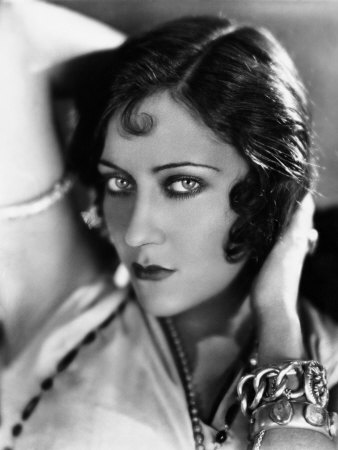
Were you surprised by what you found, in terms of the attention at that time to women actors, producers, directors, and so forth?
I really was, I was very surprised. The first half of my book is about pre-Hollywood, the tens and teens, before the industry has really consolidated in Los Angeles. What really surprised me was how much early fan culture, and so many of the early journalists who were reporting on the early industry, felt free to use these women working in the industry as a jumping off point to talk about things like feminism. I hadn’t expected to find that. It was a new word that had just entered the English language via the French. So I was very surprised at how much they were a site for discussing the emergence of modern woman, and for debate about discussing her social and professional freedoms.
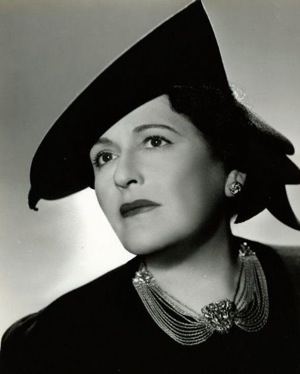
In those early years, there was also a sense that that wasn’t a hard thing to do, to break into the film industry. That changed over the period my book discusses. But initially, it was not an industry that everyone wanted to be a part of; so, you could write about it as a realistic goal in ways that you would not find today – the openness and accessibility of it.
Even now? How did that manifest itself in film participation of women? Was entrance into that world as ready for them as for men?
No, I wouldn’t say it was a completely level playing field, but they were working as directors, producers, and writers in percentages which in some cases are not even equaled today. So it was certainly much more open than what one expected for decades later, really up to today. The directors numbers have still not reached parity, last I checked. But producers, writers, yes, we’re now back to the 1910s and ‘20s – in 2012.
What explains why those numbers dropped?
That’s part of what my book tries to explain. It’s a complicated story. It was clear right after World War I that this was going to be a big business, as the new studio system, the new trust, started to develop. You start to see people taking the industry more seriously, and some of what that means is that men need to be in charge, right, because this is a serious big business, the fourth largest in the country. You see the growth of unions, and we know that unions often do all kinds of good things for workers, but what they often did for women was to exclude them. As you see cinematography, and the Directors Guild, and various unions being created, they had explicit policies about women not being allowed. That’s one piece of the story.
Another that my book focuses more on, is the way in which there was a general cultural reaction about how Hollywood was publicizing and seemingly in some instances supporting and promoting these kinds of freedoms among young women. Quite simply a lot of more conservative cultural custodians, religious conservatives, who’d become involved in their own censorship movement, were not happy about that. They’re not happy about the influence the industry is having on the aspirations and seemingly the morals of its daughters. So there really is a backlash that begins after World War I, again, as it’s becoming clear to everybody quite suddenly what a big industry this is going to be, with the decimation of the Italian and French film industries in World War I. It’s clear that this is the biggest player in town, now, and this is one of America’s biggest industries.
One of the things that was fun about the research was exploring that realization that as the war ended, there was all of a sudden a growing recognition that this run-amok, slightly déclassé business, that mostly was associated with working-class immigrants in the early 1910s, had become something very different. The suddenness of that transformation accounts for some of the concerns about the industry.
There was a more general backlash against the promotion of some of these ideas about women, and it became very pointedly directed when the Fatty Arbuckle scandal happened, at the time where I end my book. Part of what I argue is that the outcry over that scandal was about sending a message to Hollywood that it had gone too far.
A piece of anti-Semitism that comes into play, too, pretty powerfully after World War I, with the recognition that these mostly Jewish immigrant producers are in charge of the business, now. That adds a whole other layer of uncomfortability, with their relationship with setting the moral standards for young women.
Is there enough archival material out there to be able to complete a PhD dissertation like yours without too many problems?
Definitely. There has definitely been an improvement in the availability of materials and the databases to help locate them, for sure. That helps a lot.
I don’t know what accounts for the increased interest in this subject in scholarly circles and among the public. Maybe there’s a nostalgia. I’m not entirely sure about that. Maybe it’s just that with the Web, it’s been made visible in a new way. It does seem that there is more interest and that that is driving people like me, because I’m not alone, to find what is there, what was there already.
Is it a matter of the cultural blinders having come off with the gains of, say, feminist scholarship – scholars are simply more likely to see now what has always been there, if only they were oriented towards it?
Exactly; that’s a good way of putting it. Because it’s not hard to find. I teach a class every other year or so called Gender in History and American Film. The students do research papers and it’s wonderful because every year they say ‘I can’t believe they’re talking this way.’ And they’re just using historical newspapers online. It’s not that hard to find, really, if you’re open to seeing it.
Printed from Moving Image Archive News: http://www.movingimagearchivenews.org
URL to article: http://www.movingimagearchivenews.org/when-women-made-the-movies/
Click here to print